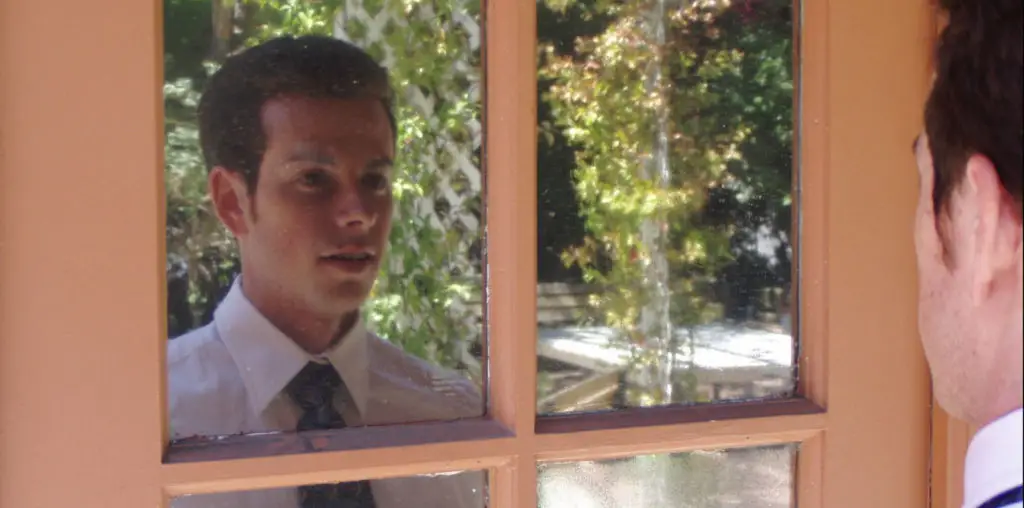
“Rhythm ‘n’ Bayous” should have been the perfect film. Robert Mugge, who created some of the finest music documentaries of the past three decades (including “Sun Ra: A Joyful Noise” and “Hellhounds on My Trail: The Afterlife of Robert Johnson”) set out across the State of Louisiana to capture its diverse musical soul and sounds. Lord knows there is so much to choose from in Louisiana: rock, country, rockabilly, jazz, Cajun, blues, gospel, swamp pop and Zydeco music. However, the resulting “Rhythm ‘n’ Bayous” is very much like a bowl of cold gumbo: all of the right ingredients are there, but someone forgot to heat it.
“Rhythm ‘n’ Bayous” divides Louisiana into three parts — the North (incorporating Shreveport, Monroe and Winnsboro) with a focus on rock, country, rockabilly and gospel, the Southeast (Baton Rouge and New Orleans) with its sounds of jazz and blues, and the Southwest (Eunice, Lafayette and Ville Platte) for Cajun, swamp pop and Zydeco music. Each part is hosted by a colorless expert in the music of that region, who serves as part-scholar and part-Ed Sullivan in explaining the importance of musical heritage and then conveniently introducing someone to play a tune or two.
One could easily overlook the clumsiness of the film’s set-up for the sake of the music. But Mugge dug up some of the strangest and least interesting performers ever to pump a keyboard or pluck a fiddle. I won’t name names out of respect to the elderly, since many of the entertainers presented here were supposedly once major talents in their respective genre, but time has not been their ally and the vocal prowess and stage presence of their halcyon days is nowhere evident in the film. Instead, there is a surplus of geriatric singers whose hoarse voices, bulging bellies and badly bleached hair make them look like refugees from “The Gong Show” rather than the best of Louisiana music.
Even worse is the presentation of Cajun music. The legendary Hackberry Ramblers turn up for a fleeting appearance (no more than two minutes, by my count) and abruptly vanish. Instead, an excess amount of time is spent with La Famille Viator, a white bread-bland clan who wear out their welcome very quickly with second-rate performances and dull palaver. It is difficult to imagine why some of the great names in Cajun music (Doug Kershaw, Michæl Doucet and Beausoleil, Steve Riley, Jo-El Sonnier) are absent from this film.
Jazz is also poorly represented by the New Orleans-based Kermit Ruffins and His Barbecue Singers, who perform two atrocious numbers which sound more like tomfoolery than jazz. It is a pity that New Orleans jazz guitarist Tony Green is nowhere to be found here — he is a Louisiana treasure whose musical mastery would have electrified the film.
“Rhythm ‘n’ Bayous” also fails to make any mention of Dixieland jazz, and no one seems to recall that the state twice elected a country singer as its governor, Jimmie Davis of “You Are My Sunshine Fame.” Many people also cite the influence of local hero Fats Domino, but we never hear a chord of his music or even a glimpse of him.
However, all is not bleak. “Rhythm ‘n’ Bayous” has a few surprises to keep the viewer’s attention. There is the legendary gospel radio DJ Sister Pearlee Tolliver, who reads her radio advertising with the charm and grace of a grandmother reminding her loved ones to study for school and eat their vegetables (get rid of Howard Stern and Don Imus and give her a national microphone, please!). The members of the Easter Rock Church, led by Rev. Lionel D. Wilson and Rev. Jimmie Lee Jones, stop the show by offering haunting gospel melodies including a unique dirge-like rendition of “When the Saints Go Marching In.” And the gorgeous Zydeco performer Rosie Ledet brings some sorely-needed glamour to the proceedings, offering a sultry stage presence hotter than any Creole sauce. In her two numbers, she turns accordion-playing into an act of sexual provocation and it is baffling to wonder why Robert Mugge didn’t devote an entire film to her!
Unfortunately, these sparkles of life are too few and far between and “Rhythm ‘n’ Bayous” is a missed opportunity along the Mississippi.
